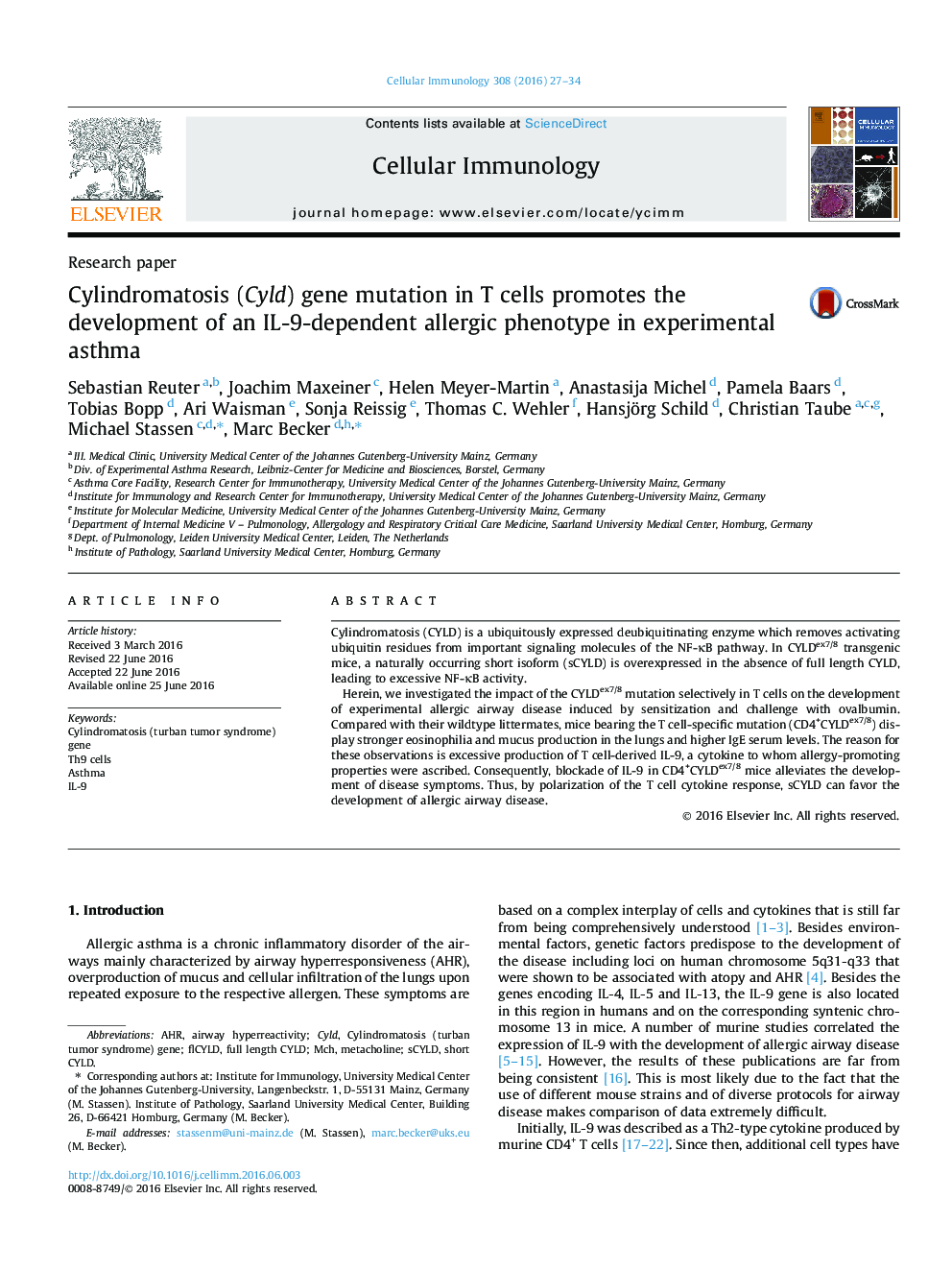| کد مقاله | کد نشریه | سال انتشار | مقاله انگلیسی | نسخه تمام متن |
|---|---|---|---|---|
| 5530781 | 1549391 | 2016 | 8 صفحه PDF | دانلود رایگان |

- Overexpression of sCYLD in T cells predisposes to the development of an allergic phenotype in mice.
- sCYLD promotes Th9 polarization.
- Th9 polarization has an impact on cardinal manifestations of allergic airway disease in mice.
Cylindromatosis (CYLD) is a ubiquitously expressed deubiquitinating enzyme which removes activating ubiquitin residues from important signaling molecules of the NF-κB pathway. In CYLDex7/8 transgenic mice, a naturally occurring short isoform (sCYLD) is overexpressed in the absence of full length CYLD, leading to excessive NF-κB activity.Herein, we investigated the impact of the CYLDex7/8 mutation selectively in T cells on the development of experimental allergic airway disease induced by sensitization and challenge with ovalbumin. Compared with their wildtype littermates, mice bearing the T cell-specific mutation (CD4+CYLDex7/8) display stronger eosinophilia and mucus production in the lungs and higher IgE serum levels. The reason for these observations is excessive production of T cell-derived IL-9, a cytokine to whom allergy-promoting properties were ascribed. Consequently, blockade of IL-9 in CD4+CYLDex7/8 mice alleviates the development of disease symptoms. Thus, by polarization of the T cell cytokine response, sCYLD can favor the development of allergic airway disease.
Journal: Cellular Immunology - Volume 308, October 2016, Pages 27-34